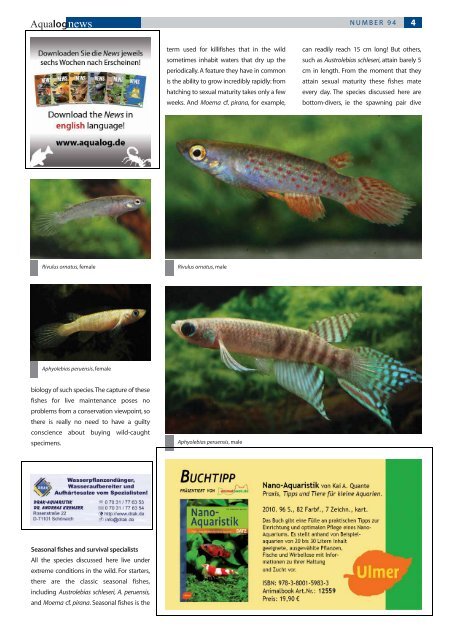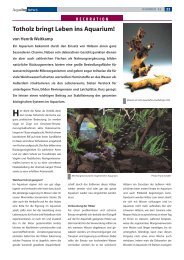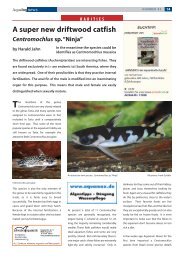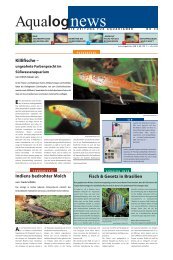LIVEBEARERS T Phallichthys tico - - a dainty new ... - Aqualog
LIVEBEARERS T Phallichthys tico - - a dainty new ... - Aqualog
LIVEBEARERS T Phallichthys tico - - a dainty new ... - Aqualog
You also want an ePaper? Increase the reach of your titles
YUMPU automatically turns print PDFs into web optimized ePapers that Google loves.
<strong>Aqualog</strong><strong>new</strong>s NUMBER 94 4<br />
Rivulus ornatus,female<br />
Aphyolebias peruensis,female<br />
biology of such species.The capture of these<br />
fishes for live maintenance poses no<br />
problems from a conservation viewpoint, so<br />
there is really no need to have a guilty<br />
conscience about buying wild-caught<br />
specimens.<br />
Seasonal fishes and survival specialists<br />
All the species discussed here live under<br />
extreme conditions in the wild. For starters,<br />
there are the classic seasonal fishes,<br />
including Austrolebias schleseri, A. peruensis,<br />
and Moema cf. pirana.Seasonal fishes is the<br />
term used for killifishes that in the wild<br />
sometimes inhabit waters that dry up the<br />
periodically. A feature they have in common<br />
is the ability to grow incredibly rapidly: from<br />
hatching to sexual maturity takes only a few<br />
weeks. And Moema cf. pirana, for example,<br />
Rivulus ornatus,male<br />
Aphyolebias peruensis,male<br />
can readily reach 15 cm long! But others,<br />
such as Austrolebias schleseri,attain barely 5<br />
cm in length. From the moment that they<br />
attain sexual maturity these fishes mate<br />
every day. The species discussed here are<br />
bottom-divers, ie the spawning pair dive







